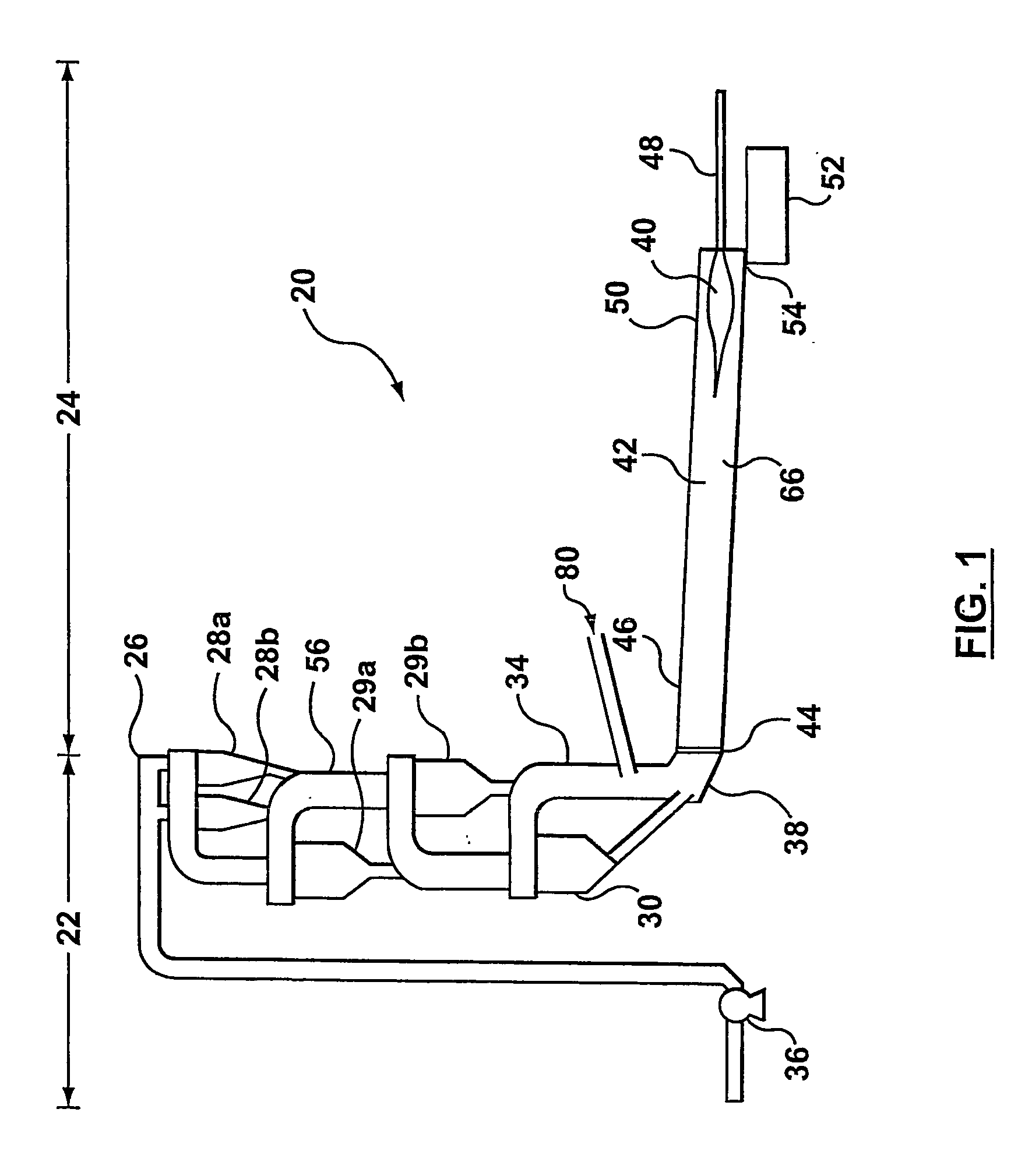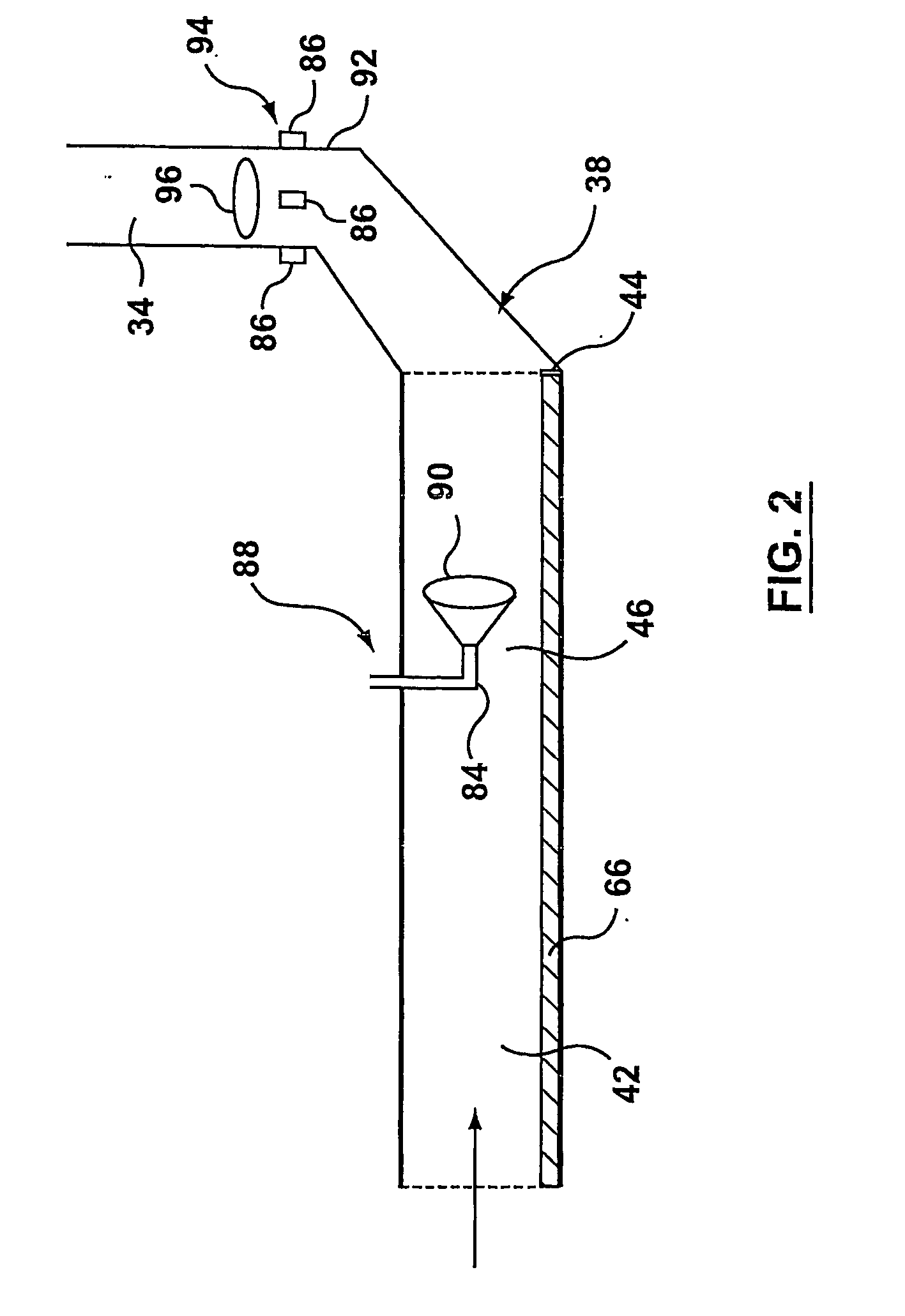Method and system for process gas entrainment and mixing in a kiln system
- Summary
- Abstract
- Description
- Claims
- Application Information
AI Technical Summary
Benefits of technology
Problems solved by technology
Method used
Image
Examples
example
[0142] A SAS system as described above has been successfully applied in a 4500 tpd off line calciner kiln system. The kiln was 84 m long and 5.2 m in diameter; the calciner had a volume of 350 m3 with a gas residence time of 2.5-3.0 secs.
[0143] Without the SAS, even at high oxygen levels that cause a drop in output rate, the calciner had significant CO problems, resulting in levels of up to 1500 ppm CO at the stack (corresponding to 10,000 ppm ex calciner at normal O2 levels of 2-3%). The high CO was thought to come from poor mixing, hence SAS was tried as a solution to the problem.
[0144] SAS was installed with a 10,000 Nm3 / hr fan, which could supply at 2500 mm water gauge with the aim of resolving problems of CO generation due to poor mixing conditions. The system had 4 swirler flow injectors with 20 degree swirl vanes injecting on to a circle of 0.3 R radius (R=calciner duct radius) and 2 swirler flow injectors directed on to a 0.5 R circle (in the same plane) in a counter rotat...
PUM
| Property | Measurement | Unit |
|---|---|---|
| Temperature | aaaaa | aaaaa |
| Temperature | aaaaa | aaaaa |
| Temperature | aaaaa | aaaaa |
Abstract
Description
Claims
Application Information
 Login to View More
Login to View More - R&D
- Intellectual Property
- Life Sciences
- Materials
- Tech Scout
- Unparalleled Data Quality
- Higher Quality Content
- 60% Fewer Hallucinations
Browse by: Latest US Patents, China's latest patents, Technical Efficacy Thesaurus, Application Domain, Technology Topic, Popular Technical Reports.
© 2025 PatSnap. All rights reserved.Legal|Privacy policy|Modern Slavery Act Transparency Statement|Sitemap|About US| Contact US: help@patsnap.com



